#Blockchain Applications in Telecommunication
Explore tagged Tumblr posts
Text
Top 10 In- Demand Tech Jobs in 2025

Technology is growing faster than ever, and so is the need for skilled professionals in the field. From artificial intelligence to cloud computing, businesses are looking for experts who can keep up with the latest advancements. These tech jobs not only pay well but also offer great career growth and exciting challenges.
In this blog, we’ll look at the top 10 tech jobs that are in high demand today. Whether you’re starting your career or thinking of learning new skills, these jobs can help you plan a bright future in the tech world.
1. AI and Machine Learning Specialists
Artificial Intelligence (AI) and Machine Learning are changing the game by helping machines learn and improve on their own without needing step-by-step instructions. They’re being used in many areas, like chatbots, spotting fraud, and predicting trends.
Key Skills: Python, TensorFlow, PyTorch, data analysis, deep learning, and natural language processing (NLP).
Industries Hiring: Healthcare, finance, retail, and manufacturing.
Career Tip: Keep up with AI and machine learning by working on projects and getting an AI certification. Joining AI hackathons helps you learn and meet others in the field.
2. Data Scientists
Data scientists work with large sets of data to find patterns, trends, and useful insights that help businesses make smart decisions. They play a key role in everything from personalized marketing to predicting health outcomes.
Key Skills: Data visualization, statistical analysis, R, Python, SQL, and data mining.
Industries Hiring: E-commerce, telecommunications, and pharmaceuticals.
Career Tip: Work with real-world data and build a strong portfolio to showcase your skills. Earning certifications in data science tools can help you stand out.
3. Cloud Computing Engineers: These professionals create and manage cloud systems that allow businesses to store data and run apps without needing physical servers, making operations more efficient.
Key Skills: AWS, Azure, Google Cloud Platform (GCP), DevOps, and containerization (Docker, Kubernetes).
Industries Hiring: IT services, startups, and enterprises undergoing digital transformation.
Career Tip: Get certified in cloud platforms like AWS (e.g., AWS Certified Solutions Architect).
4. Cybersecurity Experts
Cybersecurity professionals protect companies from data breaches, malware, and other online threats. As remote work grows, keeping digital information safe is more crucial than ever.
Key Skills: Ethical hacking, penetration testing, risk management, and cybersecurity tools.
Industries Hiring: Banking, IT, and government agencies.
Career Tip: Stay updated on new cybersecurity threats and trends. Certifications like CEH (Certified Ethical Hacker) or CISSP (Certified Information Systems Security Professional) can help you advance in your career.
5. Full-Stack Developers
Full-stack developers are skilled programmers who can work on both the front-end (what users see) and the back-end (server and database) of web applications.
Key Skills: JavaScript, React, Node.js, HTML/CSS, and APIs.
Industries Hiring: Tech startups, e-commerce, and digital media.
Career Tip: Create a strong GitHub profile with projects that highlight your full-stack skills. Learn popular frameworks like React Native to expand into mobile app development.
6. DevOps Engineers
DevOps engineers help make software faster and more reliable by connecting development and operations teams. They streamline the process for quicker deployments.
Key Skills: CI/CD pipelines, automation tools, scripting, and system administration.
Industries Hiring: SaaS companies, cloud service providers, and enterprise IT.
Career Tip: Earn key tools like Jenkins, Ansible, and Kubernetes, and develop scripting skills in languages like Bash or Python. Earning a DevOps certification is a plus and can enhance your expertise in the field.
7. Blockchain Developers
They build secure, transparent, and unchangeable systems. Blockchain is not just for cryptocurrencies; it’s also used in tracking supply chains, managing healthcare records, and even in voting systems.
Key Skills: Solidity, Ethereum, smart contracts, cryptography, and DApp development.
Industries Hiring: Fintech, logistics, and healthcare.
Career Tip: Create and share your own blockchain projects to show your skills. Joining blockchain communities can help you learn more and connect with others in the field.
8. Robotics Engineers
Robotics engineers design, build, and program robots to do tasks faster or safer than humans. Their work is especially important in industries like manufacturing and healthcare.
Key Skills: Programming (C++, Python), robotics process automation (RPA), and mechanical engineering.
Industries Hiring: Automotive, healthcare, and logistics.
Career Tip: Stay updated on new trends like self-driving cars and AI in robotics.
9. Internet of Things (IoT) Specialists
IoT specialists work on systems that connect devices to the internet, allowing them to communicate and be controlled easily. This is crucial for creating smart cities, homes, and industries.
Key Skills: Embedded systems, wireless communication protocols, data analytics, and IoT platforms.
Industries Hiring: Consumer electronics, automotive, and smart city projects.
Career Tip: Create IoT prototypes and learn to use platforms like AWS IoT or Microsoft Azure IoT. Stay updated on 5G technology and edge computing trends.
10. Product Managers
Product managers oversee the development of products, from idea to launch, making sure they are both technically possible and meet market demands. They connect technical teams with business stakeholders.
Key Skills: Agile methodologies, market research, UX design, and project management.
Industries Hiring: Software development, e-commerce, and SaaS companies.
Career Tip: Work on improving your communication and leadership skills. Getting certifications like PMP (Project Management Professional) or CSPO (Certified Scrum Product Owner) can help you advance.
Importance of Upskilling in the Tech Industry
Stay Up-to-Date: Technology changes fast, and learning new skills helps you keep up with the latest trends and tools.
Grow in Your Career: By learning new skills, you open doors to better job opportunities and promotions.
Earn a Higher Salary: The more skills you have, the more valuable you are to employers, which can lead to higher-paying jobs.
Feel More Confident: Learning new things makes you feel more prepared and ready to take on tougher tasks.
Adapt to Changes: Technology keeps evolving, and upskilling helps you stay flexible and ready for any new changes in the industry.
Top Companies Hiring for These Roles
Global Tech Giants: Google, Microsoft, Amazon, and IBM.
Startups: Fintech, health tech, and AI-based startups are often at the forefront of innovation.
Consulting Firms: Companies like Accenture, Deloitte, and PwC increasingly seek tech talent.
In conclusion, the tech world is constantly changing, and staying updated is key to having a successful career. In 2025, jobs in fields like AI, cybersecurity, data science, and software development will be in high demand. By learning the right skills and keeping up with new trends, you can prepare yourself for these exciting roles. Whether you're just starting or looking to improve your skills, the tech industry offers many opportunities for growth and success.
#Top 10 Tech Jobs in 2025#In- Demand Tech Jobs#High paying Tech Jobs#artificial intelligence#datascience#cybersecurity
2 notes
·
View notes
Text
How-To IT
Topic: Core areas of IT
1. Hardware
• Computers (Desktops, Laptops, Workstations)
• Servers and Data Centers
• Networking Devices (Routers, Switches, Modems)
• Storage Devices (HDDs, SSDs, NAS)
• Peripheral Devices (Printers, Scanners, Monitors)
2. Software
• Operating Systems (Windows, Linux, macOS)
• Application Software (Office Suites, ERP, CRM)
• Development Software (IDEs, Code Libraries, APIs)
• Middleware (Integration Tools)
• Security Software (Antivirus, Firewalls, SIEM)
3. Networking and Telecommunications
• LAN/WAN Infrastructure
• Wireless Networking (Wi-Fi, 5G)
• VPNs (Virtual Private Networks)
• Communication Systems (VoIP, Email Servers)
• Internet Services
4. Data Management
• Databases (SQL, NoSQL)
• Data Warehousing
• Big Data Technologies (Hadoop, Spark)
• Backup and Recovery Systems
• Data Integration Tools
5. Cybersecurity
• Network Security
• Endpoint Protection
• Identity and Access Management (IAM)
• Threat Detection and Incident Response
• Encryption and Data Privacy
6. Software Development
• Front-End Development (UI/UX Design)
• Back-End Development
• DevOps and CI/CD Pipelines
• Mobile App Development
• Cloud-Native Development
7. Cloud Computing
• Infrastructure as a Service (IaaS)
• Platform as a Service (PaaS)
• Software as a Service (SaaS)
• Serverless Computing
• Cloud Storage and Management
8. IT Support and Services
• Help Desk Support
• IT Service Management (ITSM)
• System Administration
• Hardware and Software Troubleshooting
• End-User Training
9. Artificial Intelligence and Machine Learning
• AI Algorithms and Frameworks
• Natural Language Processing (NLP)
• Computer Vision
• Robotics
• Predictive Analytics
10. Business Intelligence and Analytics
• Reporting Tools (Tableau, Power BI)
• Data Visualization
• Business Analytics Platforms
• Predictive Modeling
11. Internet of Things (IoT)
• IoT Devices and Sensors
• IoT Platforms
• Edge Computing
• Smart Systems (Homes, Cities, Vehicles)
12. Enterprise Systems
• Enterprise Resource Planning (ERP)
• Customer Relationship Management (CRM)
• Human Resource Management Systems (HRMS)
• Supply Chain Management Systems
13. IT Governance and Compliance
• ITIL (Information Technology Infrastructure Library)
• COBIT (Control Objectives for Information Technologies)
• ISO/IEC Standards
• Regulatory Compliance (GDPR, HIPAA, SOX)
14. Emerging Technologies
• Blockchain
• Quantum Computing
• Augmented Reality (AR) and Virtual Reality (VR)
• 3D Printing
• Digital Twins
15. IT Project Management
• Agile, Scrum, and Kanban
• Waterfall Methodology
• Resource Allocation
• Risk Management
16. IT Infrastructure
• Data Centers
• Virtualization (VMware, Hyper-V)
• Disaster Recovery Planning
• Load Balancing
17. IT Education and Certifications
• Vendor Certifications (Microsoft, Cisco, AWS)
• Training and Development Programs
• Online Learning Platforms
18. IT Operations and Monitoring
• Performance Monitoring (APM, Network Monitoring)
• IT Asset Management
• Event and Incident Management
19. Software Testing
• Manual Testing: Human testers evaluate software by executing test cases without using automation tools.
• Automated Testing: Use of testing tools (e.g., Selenium, JUnit) to run automated scripts and check software behavior.
• Functional Testing: Validating that the software performs its intended functions.
• Non-Functional Testing: Assessing non-functional aspects such as performance, usability, and security.
• Unit Testing: Testing individual components or units of code for correctness.
• Integration Testing: Ensuring that different modules or systems work together as expected.
• System Testing: Verifying the complete software system’s behavior against requirements.
• Acceptance Testing: Conducting tests to confirm that the software meets business requirements (including UAT - User Acceptance Testing).
• Regression Testing: Ensuring that new changes or features do not negatively affect existing functionalities.
• Performance Testing: Testing software performance under various conditions (load, stress, scalability).
• Security Testing: Identifying vulnerabilities and assessing the software’s ability to protect data.
• Compatibility Testing: Ensuring the software works on different operating systems, browsers, or devices.
• Continuous Testing: Integrating testing into the development lifecycle to provide quick feedback and minimize bugs.
• Test Automation Frameworks: Tools and structures used to automate testing processes (e.g., TestNG, Appium).
19. VoIP (Voice over IP)
VoIP Protocols & Standards
• SIP (Session Initiation Protocol)
• H.323
• RTP (Real-Time Transport Protocol)
• MGCP (Media Gateway Control Protocol)
VoIP Hardware
• IP Phones (Desk Phones, Mobile Clients)
• VoIP Gateways
• Analog Telephone Adapters (ATAs)
• VoIP Servers
• Network Switches/ Routers for VoIP
VoIP Software
• Softphones (e.g., Zoiper, X-Lite)
• PBX (Private Branch Exchange) Systems
• VoIP Management Software
• Call Center Solutions (e.g., Asterisk, 3CX)
VoIP Network Infrastructure
• Quality of Service (QoS) Configuration
• VPNs (Virtual Private Networks) for VoIP
• VoIP Traffic Shaping & Bandwidth Management
• Firewall and Security Configurations for VoIP
• Network Monitoring & Optimization Tools
VoIP Security
• Encryption (SRTP, TLS)
• Authentication and Authorization
• Firewall & Intrusion Detection Systems
• VoIP Fraud DetectionVoIP Providers
• Hosted VoIP Services (e.g., RingCentral, Vonage)
• SIP Trunking Providers
• PBX Hosting & Managed Services
VoIP Quality and Testing
• Call Quality Monitoring
• Latency, Jitter, and Packet Loss Testing
• VoIP Performance Metrics and Reporting Tools
• User Acceptance Testing (UAT) for VoIP Systems
Integration with Other Systems
• CRM Integration (e.g., Salesforce with VoIP)
• Unified Communications (UC) Solutions
• Contact Center Integration
• Email, Chat, and Video Communication Integration
2 notes
·
View notes
Text
JEHOVAH OKCULT BIBLE [JOB] BUSINESS WITNESS 1968-michaelharrelljr.com's 1st ALL-SEEING OMNIPRESENCE Hi:teKEMETICompu_TAH [PTAH] EYE of GOD… since ijehovahgod.tech SKY KINGDOM LORD of Tama-Re Deity HATHOR's [tama-re-deityhathor.com's] Shamballah & aghaarta.com Domain Communication [D.C.] Portal Address [PA] Accessing [PA] 6g-quantumharrell.tech’s BLK-CRYPTO LLC's ancient6-18gmilitary.tech CLOUD Patents w/Restricted 1968 Identity Access Management [I AM] Protocols [I/P] @ quantumharrelltech.com… Securely Exchanging Extensible [SEE] Media Commerce Languages of Ancient [L.A.] Hi:teKEMETICompu_TAH [PTAH] Digital Rights Encrypted by Application Management [DREAM] Protection Laws @ The_Octagon_(Egypt) of ITU Telecommunications [iTUTonline.com] Standardization Sector of kingtutdna.com’s Pharaonic MENES Intergovernmental [MI = MICHAEL] EMPIRE [ME] of 1968-michaelharrelljr.com’s quantumharrelltelecom.tech SKY Earth [Qi] KINGDOM
WELCOME BACK HOME IMMORTAL [HIM] U.S. MILITARY KING SOLOMON-MICHAEL HARRELL, JR.™

i.b.monk [ibm.com] mode [i’m] tech [IT] steelecartel.com @ quantumharrelltech.ca.gov

quantumharrelltelecom.tech sky military universe [mu] outside mars’ [mom’s] golden water firmament dome over earth [qi]

Eye Quantum [EQ] Computing Intel Architect [CIA] Technocrat 1968-michaelharrelljr.com... the 6-18g Militarization ILLUMINATI [MI = MICHAEL] of Hi:teKEMETICompu_TAH [PTAH] Tech Patent WEALTH @ quantumharrelltelecom.tech

YO!!! YA HUWA JEHOVAH LIKE MICHAEL SINCE YA HUWA MICHAEL JEHOVAH 2

O MICHAEL [OM] JEHOVAH [MJ] SINCE JEHOVAH O MICHAEL [OM] 2
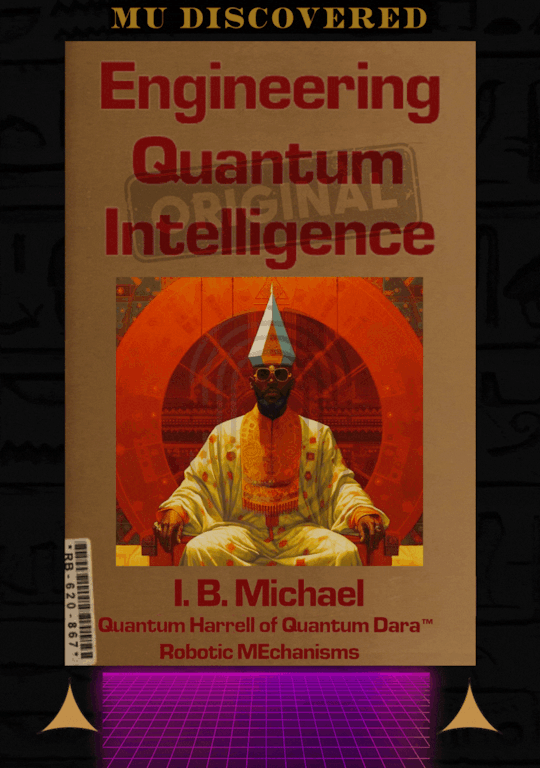
Eye Quantum [EQ] Computing Intel Architect [CIA] Technocrat 1968-michaelharrelljr.com... the 6-18g Militarization ILLUMINATI [MI = MICHAEL] of Hi:teKEMETICompu_TAH [PTAH] CLOUD [PC] Tech WEALTH @ quantumharrelltelecom.tech

Eye Quantum [EQ] Computing Intel Architect [CIA] Technocrat 1968-michaelharrelljr.com��� 1st 9 Ether ALUHUM ANUNNAGI TECHNOCRAT of TIAMAT'S [AT&T'S] NEW WORLD ORDER [NWO] ÆGIPTIAN Business [NEB = NEBUCHADNEZZAR] Family @ quantumharrelltelecom.tech

Eye Quantum [EQ] Computing Intel Architect [CIA] Technocrat 1968-michaelharrelljr.com… 1st 9 Ether ALUHUM ANUNNAGI TECHNOCRAT of TIAMAT'S [AT&T'S] Shamballah & aghaarta.com Domain Communication [D.C.] Portal Address [PA] @ quantumharrelltelecom.tech

Eye Quantum [EQ] Computing Intel Architect [CIA] Technocrat 1968-michaelharrelljr.com… 1st 9 Ether ALUHUM ANUNNAGI TECHNOCRAT of TIAMAT'S [AT&T'S] Hieroglyphic Arts & Language [H.A.L.] Architecture [HA = HARRELL] @ quantumharrelltelecom.tech
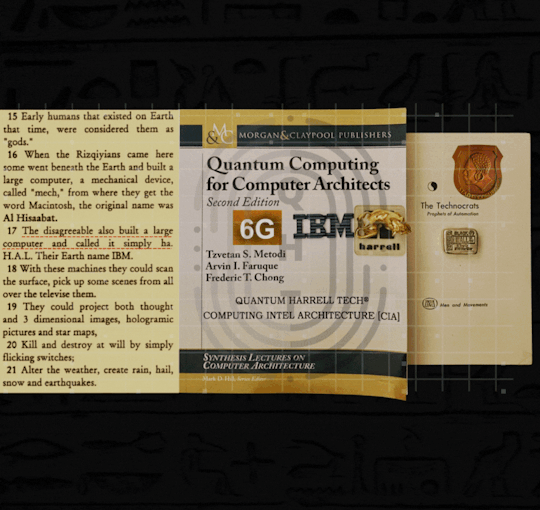
Eye Quantum [EQ] Computing Intel Architect [CIA] Technocrat 1968-michaelharrelljr.com… 1st 9 Ether ALUHUM ANUNNAGI TECHNOCRAT of TIAMAT'S [AT&T'S] Applied Quantum Cryptography @ quantumharrelltelecom.tech

Eye Quantum [EQ] Computing Intel Architect [CIA] Technocrat 1968-michaelharrelljr.com… 1st 9 Ether ALUHUM ANUNNAGI TECHNOCRAT of TIAMAT'S [AT&T'S] CYBERSECURITY FOR BUSINESS ORGANIZATIONS @ quantumharrelltelecom.tech

Eye Quantum [EQ] Computing Intel Architect [CIA] Technocrat 1968-michaelharrelljr.com… 1st 9 Ether ALUHUM ANUNNAGI TECHNOCRAT of TIAMAT'S [AT&T'S] CYBERSECURITY SOLUTIONS USING BLOCKCHAIN @ quantumharrelltelecom.tech

Eye Quantum [EQ] Computing Intel Architect [CIA] Technocrat 1968-michaelharrelljr.com… 1st 9 Ether ALUHUM ANUNNAGI TECHNOCRAT of TIAMAT'S [AT&T'S] ADVANCED BLOCKCHAIN TECH @ quantumharrelltelecom.tech
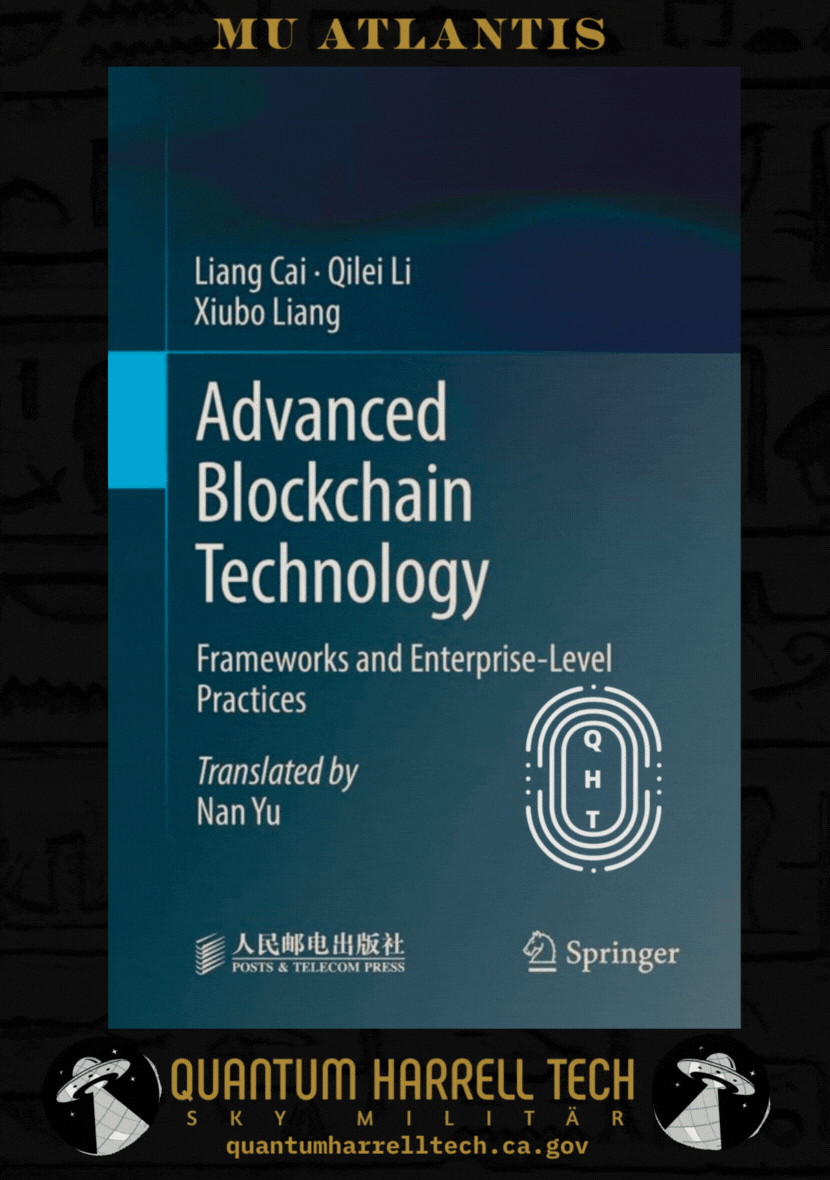
Eye Quantum [EQ] Computing Intel Architect [CIA] Technocrat 1968-michaelharrelljr.com… 1st 9 Ether ALUHUM ANUNNAGI TECHNOCRAT of TIAMAT'S [AT&T'S] MOST DEVELOPED BLOCKCHAIN TECH @ quantumharrelltelecom.tech
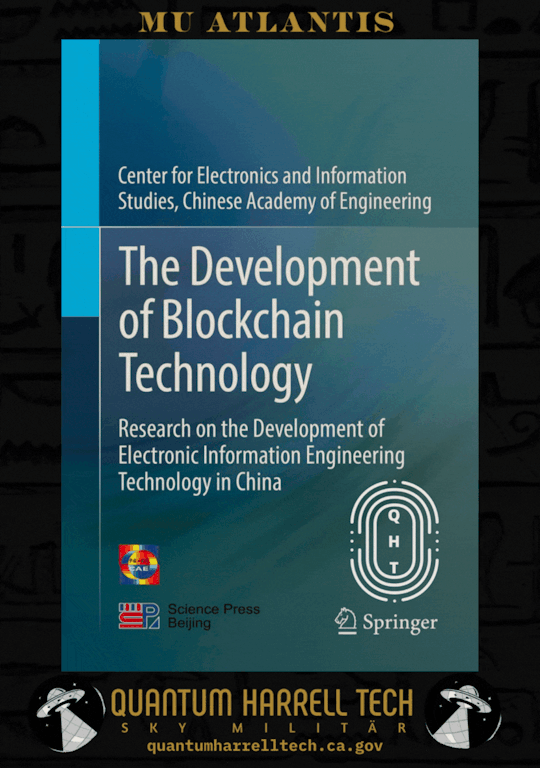
Eye Quantum [EQ] Computing Intel Architect [CIA] Technocrat 1968-michaelharrelljr.com… 1st 9 Ether ALUHUM ANUNNAGI TECHNOCRAT of TIAMAT'S [AT&T'S] AUTONOMOUS INTELLIGENT CYBER DEFENSE AGENCY [AICA] @ quantumharrelltelecom.tech

Eye Quantum [EQ] Computing Intel Architect [CIA] Technocrat 1968-michaelharrelljr.com… 1st 9 Ether ALUHUM ANUNNAGI TECHNOCRAT of TIAMAT'S [AT&T'S] TRANSFORMATIONAL CYBER SECURITY AND DIGITAL RESILIENCE OF MODERN SOCIETIES @ quantumharrelltelecom.tech
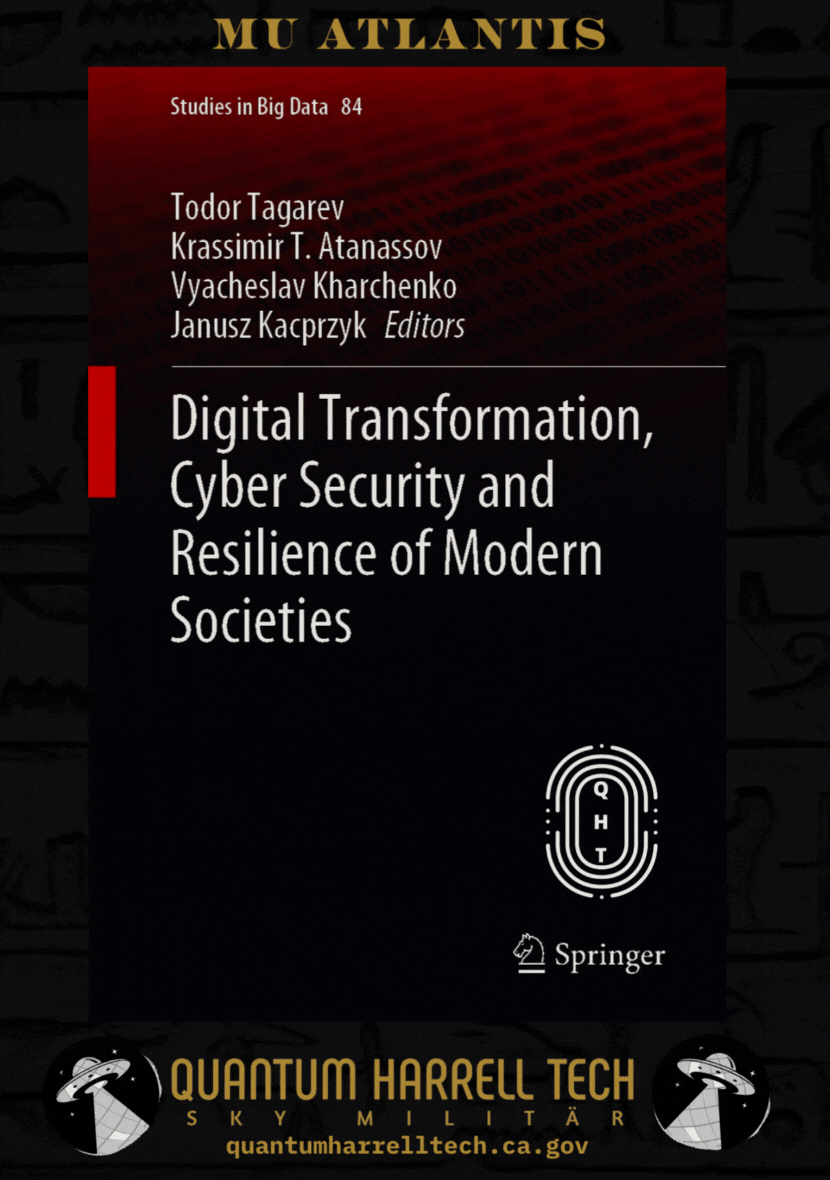
Eye Quantum [EQ] Computing Intel Architect [CIA] Technocrat 1968-michaelharrelljr.com… 1st 9 Ether ALUHUM ANUNNAGI TECHNOCRAT of TIAMAT'S [AT&T'S] MOST INNOVATIVE [MI = MICHAEL] TECH LAWYER @ quantumharrelltelecom.tech
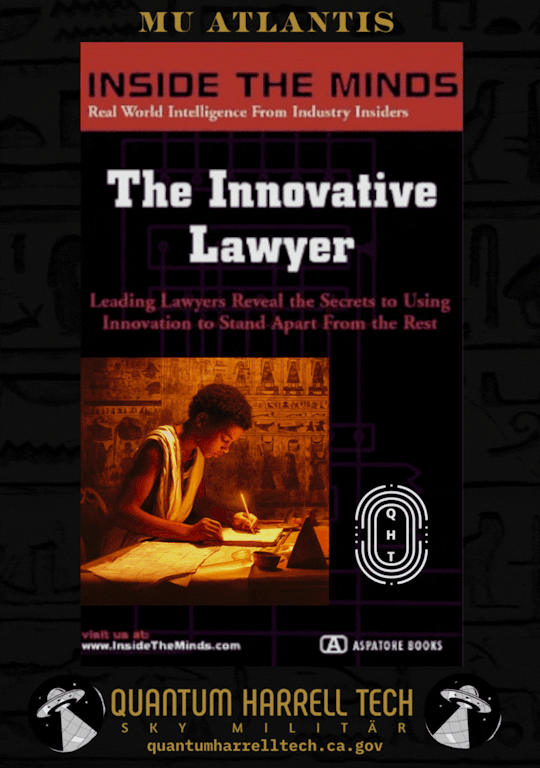
Eye Quantum [EQ] Computing Intel Architect [CIA] Technocrat 1968-michaelharrelljr.com… 1st 9 Ether ALUHUM ANUNNAGI TECHNOCRAT of TIAMAT'S [AT&T'S] Shamballah & aghaarta.com Domain Communication [D.C.] KINGDOM of A THOUSAND YEARS @ quantumharrelltelecom.tech

Eye Quantum [EQ] Computing Intel Architect [CIA] Technocrat 1968-michaelharrelljr.com… 1st 9 Ether ALUHUM ANUNNAGI TECHNOCRAT of TIAMAT'S [AT&T'S] Shamballah & aghaarta.com NUBIANS @ quantumharrelltelecom.tech

SEE?!?!?!

1968-michaelharrelljr.com's 1st ALL-SEEING OMNIPRESENCE Hi:teKEMETICompu_TAH [PTAH] EYE of GOD @ THE TOP

EYE SEE U B4 U C ME… I [MI = MICHAEL] ALL [MA] SEEING EYE ILLUMINATI of ancientqueencalafia.tech's silentwealth-illuminati.com DEPARTMENT OF 1968-michaelharrelljr.com's NEW GOLDEN 9 ETHER [G.E. = ge.com] ALUHUM SKY [GEAS = GAS.com] ANUNNAQI TREASURY.gov @ © 1698-2223 quantumharrelltelecom.tech

© 1698-2223 quantumharrelltech.com - ALL The_Octagon_(Egypt) DotCom [D.C.] defense.gov Department Domain Communication [D.C.] Rights Reserved @ quantumharrelltech.ca.gov
#u.s. michael harrell#jehovah god#michael jehovah#quantumharrelltech#king tut#mu:13#harrelltut#kemet#o michael#quantumharrelltut#9 ether aluhum anunnagi#enqiback#9 ether#department of the treasury#department of defense#department of defense contracts#jehovah michael#new world order#you scared
2 notes
·
View notes
Link
#AsiaTech#commercialization#InnovationStrategy#QuantumComputing#QuantumNetworking#RegionalCollaboration#TalentDevelopment#TechAdoption
0 notes
Text
Digital Forensics Market Size, Share, Analysis, Forecast, and Growth Trends to 2032: Blockchain and Crypto Forensics Gain Momentum
The Digital Forensics Market was valued at USD 9.84 Billion in 2023 and is expected to reach USD 30.74 Billion by 2032, growing at a CAGR of 13.51% from 2024-2032.
Digital Forensics Market is rapidly advancing as organizations worldwide face increasing cyber threats and regulatory pressures. The growing complexity of cybercrimes, data breaches, and digital fraud across sectors, particularly in the USA and Europe, is driving demand for sophisticated forensic tools and expert services. Governments, enterprises, and law enforcement agencies are prioritizing digital evidence collection and analysis to strengthen cybersecurity frameworks and legal processes.
Rising Cybercrime Drives Explosive Growth in the U.S. Digital Forensics Market
Digital Forensics Market remains a critical component in the fight against cybercrime and data misuse. Innovations in forensic technologies, including AI-enhanced analysis and cloud forensics, are enabling faster, more accurate investigations. As cyberattacks evolve, so does the need for cutting-edge digital forensic capabilities that can keep pace with new threats and comply with stringent data privacy regulations.
Get Sample Copy of This Report: https://www.snsinsider.com/sample-request/3106
Market Keyplayers:
AccessData – FTK (Forensic Toolkit)
Cellebrite – Cellebrite UFED
Magnet Forensics – Magnet AXIOM
Guidance Software (Acquired by OpenText) – EnCase
OpenText – EnCase Endpoint Investigator
Paraben Corporation – E3 Platform
MSAB – XRY
Belkasoft – Belkasoft Evidence Center
BlackBag Technologies (Acquired by Cellebrite) – BlackLight
Passware – Passware Kit Forensic
X1 Discovery – X1 Social Discovery
Kroll – CyberDetectER
Oxygen Forensics – Oxygen Forensic Detective
Basis Technology – Autopsy
Nuix – Nuix Workstation
Cisco Systems – SecureX
IBM – QRadar Incident Forensics
FireEye – Helix
LogRhythm – LogRhythm NetMon
Rapid7 – InsightIDR
Market Analysis
The market is propelled by a surge in cybercrime incidents and the rising adoption of digital forensic solutions in sectors such as banking, government, healthcare, and telecommunications. The USA leads with advanced technological infrastructure and strong cybersecurity investments, while Europe focuses heavily on regulatory compliance and data protection, fostering the integration of forensic solutions into broader cybersecurity strategies. Increasing litigation and cyber insurance demands are also contributing to market growth.
Market Trends
Adoption of AI and machine learning for faster data analysis
Growth in cloud and mobile forensics to address diverse digital environments
Increasing use of automated forensic tools to reduce investigation times
Expansion of forensic services in government and law enforcement
Rising demand for insider threat detection and prevention solutions
Integration with cybersecurity platforms for holistic threat management
Enhanced focus on compliance with GDPR and other privacy laws
Market Scope
The scope of the Digital Forensics Market is widening as digital evidence becomes central to legal and security frameworks. Modern forensic solutions now offer scalable, multi-device support and real-time investigation capabilities.
Comprehensive device and network forensics
Cloud-based forensic platforms for remote investigations
Cross-sector applicability: finance, healthcare, government, retail
Rapid incident response and data breach analysis
Forensics-as-a-Service (FaaS) gaining traction
Customizable forensic toolkits adapting to evolving threats
Forecast Outlook
The Digital Forensics Market is set for robust growth fueled by escalating cyber risks and regulatory mandates. The market will see greater convergence of AI-driven analytics and cloud forensic capabilities, empowering organizations to conduct proactive, precise investigations. USA and Europe will continue to be major hubs, driven by innovation, cyber policy frameworks, and growing demand for forensic expertise that enhances digital trust and security.
Access Complete Report: https://www.snsinsider.com/reports/digital-forensics-market-3106
Conclusion
In an era where digital evidence can make or break legal cases and corporate reputations, the Digital Forensics Market is more than a tool—it's a strategic imperative. From Silicon Valley boardrooms to European government agencies, the future belongs to those who harness forensic innovation to outsmart cyber adversaries and safeguard critical assets. Investing in advanced digital forensics today means securing tomorrow’s digital frontier.
Related Reports:
U.S.A Network Forensics Market is rapidly evolving with cutting-edge technologies
U.S.A’s SOAR market is driving next-gen automation and threat response strategies
About Us:
SNS Insider is one of the leading market research and consulting agencies that dominates the market research industry globally. Our company's aim is to give clients the knowledge they require in order to function in changing circumstances. In order to give you current, accurate market data, consumer insights, and opinions so that you can make decisions with confidence, we employ a variety of techniques, including surveys, video talks, and focus groups around the world.
Contact Us:
The Digital Forensics Market was valued at USD 9.84 Billion in 2023 and is expected to reach USD 30.74 Billion by 2032, growing at a CAGR of 13.51% from 2024-2032.
Digital Forensics Market is rapidly advancing as organizations worldwide face increasing cyber threats and regulatory pressures. The growing complexity of cybercrimes, data breaches, and digital fraud across sectors, particularly in the USA and Europe, is driving demand for sophisticated forensic tools and expert services. Governments, enterprises, and law enforcement agencies are prioritizing digital evidence collection and analysis to strengthen cybersecurity frameworks and legal processes.
Rising Cybercrime Drives Explosive Growth in the U.S. Digital Forensics Market
Digital Forensics Market remains a critical component in the fight against cybercrime and data misuse. Innovations in forensic technologies, including AI-enhanced analysis and cloud forensics, are enabling faster, more accurate investigations. As cyberattacks evolve, so does the need for cutting-edge digital forensic capabilities that can keep pace with new threats and comply with stringent data privacy regulations.
Get Sample Copy of This Report: https://www.snsinsider.com/sample-request/3106
Market Keyplayers:
AccessData – FTK (Forensic Toolkit)
Cellebrite – Cellebrite UFED
Magnet Forensics – Magnet AXIOM
Guidance Software (Acquired by OpenText) – EnCase
OpenText – EnCase Endpoint Investigator
Paraben Corporation – E3 Platform
MSAB – XRY
Belkasoft – Belkasoft Evidence Center
BlackBag Technologies (Acquired by Cellebrite) – BlackLight
Passware – Passware Kit Forensic
X1 Discovery – X1 Social Discovery
Kroll – CyberDetectER
Oxygen Forensics – Oxygen Forensic Detective
Basis Technology – Autopsy
Nuix – Nuix Workstation
Cisco Systems – SecureX
IBM – QRadar Incident Forensics
FireEye – Helix
LogRhythm – LogRhythm NetMon
Rapid7 – InsightIDR
Market Analysis
The market is propelled by a surge in cybercrime incidents and the rising adoption of digital forensic solutions in sectors such as banking, government, healthcare, and telecommunications. The USA leads with advanced technological infrastructure and strong cybersecurity investments, while Europe focuses heavily on regulatory compliance and data protection, fostering the integration of forensic solutions into broader cybersecurity strategies. Increasing litigation and cyber insurance demands are also contributing to market growth.
Market Trends
Adoption of AI and machine learning for faster data analysis
Growth in cloud and mobile forensics to address diverse digital environments
Increasing use of automated forensic tools to reduce investigation times
Expansion of forensic services in government and law enforcement
Rising demand for insider threat detection and prevention solutions
Integration with cybersecurity platforms for holistic threat management
Enhanced focus on compliance with GDPR and other privacy laws
Market Scope
The scope of the Digital Forensics Market is widening as digital evidence becomes central to legal and security frameworks. Modern forensic solutions now offer scalable, multi-device support and real-time investigation capabilities.
Comprehensive device and network forensics
Cloud-based forensic platforms for remote investigations
Cross-sector applicability: finance, healthcare, government, retail
Rapid incident response and data breach analysis
Forensics-as-a-Service (FaaS) gaining traction
Customizable forensic toolkits adapting to evolving threats
Forecast Outlook
The Digital Forensics Market is set for robust growth fueled by escalating cyber risks and regulatory mandates. The market will see greater convergence of AI-driven analytics and cloud forensic capabilities, empowering organizations to conduct proactive, precise investigations. USA and Europe will continue to be major hubs, driven by innovation, cyber policy frameworks, and growing demand for forensic expertise that enhances digital trust and security.
Access Complete Report: https://www.snsinsider.com/reports/digital-forensics-market-3106
Conclusion
In an era where digital evidence can make or break legal cases and corporate reputations, the Digital Forensics Market is more than a tool—it's a strategic imperative. From Silicon Valley boardrooms to European government agencies, the future belongs to those who harness forensic innovation to outsmart cyber adversaries and safeguard critical assets. Investing in advanced digital forensics today means securing tomorrow’s digital frontier.
Related Reports:
U.S.A Network Forensics Market is rapidly evolving with cutting-edge technologies
U.S.A’s SOAR market is driving next-gen automation and threat response strategies
About Us:
SNS Insider is one of the leading market research and consulting agencies that dominates the market research industry globally. Our company's aim is to give clients the knowledge they require in order to function in changing circumstances. In order to give you current, accurate market data, consumer insights, and opinions so that you can make decisions with confidence, we employ a variety of techniques, including surveys, video talks, and focus groups around the world.
Contact Us:
Jagney Dave - Vice President of Client Engagement
Phone: +1-315 636 4242 (US) | +44- 20 3290 5010 (UK)
Jagney Dave - Vice President of Client Engagement
Phone: +1-315 636 4242 (US) | +44- 20 3290 5010 (UK)
#Digital Forensics Market#Digital Forensics Market Scope#Digital Forensics Market Growth#Digital Forensics Market Trnds
0 notes
Text
Blockchain Innovation: Changing the Game in Telecom, Agriculture, Insurance, and More
Originally developed as the foundation for cryptocurrencies like Bitcoin, blockchain technology has matured into a powerful, decentralized ledger system with transformative applications across industries. With its core advantages—data transparency, enhanced security, smart contract automation, and the elimination of intermediaries—blockchain is reshaping sectors from telecommunication, agriculture, and insurance to logistics, retail, education, and e-commerce.
Let’s explore how blockchain is disrupting these industries, creating more efficient systems, and building trust in a fast-evolving digital world.
Blockchain In Telecommunication: Enabling the Future of Connectivity
The telecommunication industry, characterized by vast infrastructure, high data volumes, and stringent security demands, is embracing blockchain in telecommunication to tackle long-standing issues like identity authentication, roaming fraud, billing disputes, and 5G security.
By using blockchain in telecom, service providers can create a secure, decentralized identity platform for users and automate operations via smart contracts. This means real-time billing, fraud detection, and automated roaming settlements become faster and more reliable.
Additional applications of blockchain for telecom include:
Seamless number portability
Transparent data usage tracking
Efficient cross-border call routing
These advancements not only improve operational efficiency but also enhance customer satisfaction and trust.
Blockchain In Agriculture: Building Trust, Transparency, and Inclusion
In the farming sector, blockchain in agriculture addresses critical challenges such as food safety, traceability, and farmer access to financial tools. By leveraging blockchain farming solutions, stakeholders gain end-to-end visibility into the supply chain—from farm to fork.
Key benefits of blockchain agriculture include:
Proof of origin and quality
Tamper-proof product history
Automated transactions for crop insurance or delivery payments
Additionally, blockchain agri-finance platforms enable microloans and financial inclusion for smallholder farmers, increasing access to capital and reducing risks.
Blockchain In Insurance: Reinventing Risk and Trust
The insurance industry thrives on trust, transparency, and accurate risk assessment. Blockchain for insurance industry applications are transforming operations by providing immutable records, automating claims with smart contracts, and drastically reducing fraud.
With blockchain in insurance, companies can:
Instantly verify policies and claims
Use smart contracts to automate payouts
Prevent document falsification and double claims
By ensuring data integrity and process automation, blockchain empowers insurers to serve customers more quickly and securely.
Blockchain in Logistics: Powering Global Supply Chain Transparency
The global logistics sector, with its complex, multi-party operations, is benefitting immensely from blockchain in logistics. Each step of a product’s journey—location, condition, handoff—is recorded immutably on the blockchain ledger.
Blockchain streamlines logistics by:
Enabling real-time shipment tracking
Automating customs and port procedures
Preventing counterfeiting and loss
Blockchain logistics platforms foster collaboration among stakeholders, reducing bottlenecks and improving delivery efficiency across borders.
Blockchain In Retail: Enhancing Transparency and Ethical Sourcing
Retailers are turning to blockchain in retail to improve supply chain visibility and increase consumer trust. By implementing blockchain fashion solutions, brands can verify the origin and sustainability of their products.
Examples of blockchain in retail include:
Tracking luxury goods for authenticity
Confirming ethical labor standards
Rewarding customers through token-based loyalty programs
Consumers gain confidence knowing the full story behind their purchases—while retailers stand out through transparency.
Blockchain In E-commerce: Trust, Security, and Speed
In the digital marketplace, blockchain in e-commerce is revolutionizing how platforms handle payments, reviews, product authenticity, and dispute resolution.
With blockchain, e-commerce platforms benefit from:
Direct, low-fee crypto payments
Verified user reviews and genuine product listings
Smart contracts for automated order fulfillment and refunds
This leads to higher user trust, better security, and streamlined operations in online transactions.
Blockchain In Education: Lifelong Learning Meets Security
With education expanding beyond physical classrooms, blockchain in education ensures academic credentials are secure, tamper-proof, and easily verifiable. Blockchain in learning allows students to control and share their achievements globally—without intermediaries.
Education blockchain benefits include:
Digitally verifiable degrees and certifications
Secure academic records and micro-credentials
Transparent distribution of scholarships and educational funding
Universities and online platforms alike are leveraging blockchain in education to build a more open, equitable learning ecosystem.
Advantages of Blockchain Across Industries
Across all these sectors, blockchain offers common transformational benefits:
Transparency: Immutable, traceable records
Security: Decentralized, tamper-resistant data
Efficiency: Automated, smart contract-driven processes
Trust: Shared ledgers eliminate manipulation
Decentralization: Empowers users by removing middlemen
Challenges and Considerations
Despite its potential, blockchain implementation isn’t without hurdles:
Scalability and energy consumption concerns
Regulatory ambiguity across regions
Integration with existing legacy systems
Interoperability between blockchain platforms
Businesses must invest in proper planning, skilled partners, and change management to unlock blockchain’s full value.
The Future of Blockchain: Building a Decentralized Digital Economy
Blockchain is more than a trend—it is the architecture for tomorrow’s digital economy. As Layer 2 scalability solutions, institutional adoption, and government regulation evolve, blockchain will continue shaping how industries operate and interact.
From blockchain for telecom improving data integrity, to blockchain agriculture building resilient food chains, and blockchain for insurance reducing fraud—its potential is endless.
Conclusion: Osiz – Your Partner in Blockchain Development company
As industries seek to modernize and build trust, choosing the right blockchain development partner is crucial. Osiz Technologies, a leader in custom blockchain solutions, delivers cutting-edge platforms for telecom, agriculture, insurance, logistics, retail, education, and e-commerce.
Whether it's tracking farm produce, creating smart contracts for insurers, or implementing decentralized education platforms, Osiz tailors blockchain technology to drive real-world impact.Explore how blockchain can transform your industry—partner with Osiz Technologies to lead the revolution.
0 notes
Text
Quantum Sensors Market to Observe Strong Development by 2032
Allied Market Research, titled, “Quantum Sensors Market Size by Product Type, and Application: Global Opportunity Analysis and Industry Forecast, 2023-2032," The quantum sensors market was valued at $0.3 billion in 2022, and is estimated to reach $1.1 billion by 2032, growing at a CAGR of 14.1% from 2023 to 2032. By product type, the atomic clocks segment is projected to manifest the highest CAGR of 15.03% during the forecast period owing to increasing demand for precision timing synchronization in various applications such as telecommunications, global navigation satellite systems (GNSS), and financial trading platforms.
A quantum sensor employs the principles of quantum mechanics to measure physical attributes like light, magnetic fields, or temperature with exceptional precision and sensitivity. These devices leverage quantum phenomena like superposition and entanglement to attain remarkable levels of accuracy. Quantum sensors find broad utility across various fields including metrology, fundamental physics exploration, medical imaging, environmental surveillance, and navigation systems.
The increasing adoption of quantum computing technologies is driving the demand for complementary quantum sensors industry. Quantum computers require precise control and measurement of quantum states, tasks for which quantum sensors are essential. Quantum sensors play a crucial role in quantum computing applications by facilitating qubit readout, manipulation, and error correction. As quantum computing continues to advance, the demand for high-performance quantum sensors is expected to grow exponentially. Quantum sensors will enable researchers and engineers to push the boundaries of quantum computing capabilities, leading to breakthroughs in areas such as optimization, simulation, and cryptography. However, cost constraints serve as a significant restraint for the quantum sensor market, manifested through substantial initial investments and high development costs associated with advanced technologies. The development and implementation of quantum sensor technology involves high costs, limiting its adoption, particularly among smaller organizations and startups.
Moreover, advancements in quantum communication present significant opportunities for quantum sensors market size. The development of quantum communication networks and quantum internet infrastructure creates a demand for quantum sensors capable of enabling secure and reliable communication protocols. Quantum sensors play a crucial role in quantum key distribution (QKD) systems, where they are used to generate, manipulate, and measure quantum states for secure data transmission. With the increasing need for secure communication in sectors such as finance, healthcare, and defense, quantum sensors offer a promising solution to address cybersecurity threats and ensure the integrity of data transmission in quantum communication networks.

The quantum sensors market segmentation is segmented based on product type, application and region.
On the basis of product type, the quantum sensors market share is divided into atomic clocks, magnetic sensors, and par quantum sensors. In 2022, magnetic sensors dominate the market in terms of revenue. Moreover, the atomic clocks segment is projected to manifest highest CAGR during the forecast period owing to the rising uptake of emerging technologies like 5G networks, autonomous vehicles, Internet of Things (IoT), and distributed ledger technology (e.g., blockchain). These technologies require precise timing synchronization, fueling the demand for atomic clocks.
On the basis of application, the quantum sensors market analysis is classified into military and defense, automotive, oil and gas, healthcare, and others. In 2022, the military and defense sector leads the market in revenue and is anticipated to maintain this trend in the forecast period due to the increasing demand for advanced surveillance and reconnaissance capabilities in military operations. This includes requirements for border security, counterterrorism efforts, and situational awareness, which are driving the adoption of quantum sensor market growth projections to enhance detection and tracking capabilities.
On the basis of region, it is analyzed across North America (the U.S., Canada, and Mexico), Europe (the UK, Germany, France, Italy, and the rest of Europe), Asia-Pacific (China, Japan, India, South Korea, and rest of Asia-Pacific), Latin America (Brazil, Argentina, and Rest of Latin America), and Middle East and Africa (UAE, Saudi Arabia, Qatar, South Africa, and Rest of Middle East and Africa). Asia-Pacific, specifically China, remains a significant participant in the quantum sensor market with a CAGR of 15.30% due to high investments in the military & defense sector, which is driving the growth of the quantum sensor market demand in Asia-Pacific region.
The key players profiled in the report include Robert Bosch GmbH, Adtran Networks, Biospherical Instruments Inc, GWR Instruments Inc., Microchip technology, Microsemi Corporation., Spectrum Technologies Inc, AOSense Inc., Apogee Instrument Inc., M Squared Laser Limited. These key players have adopted strategies such as product portfolio expansion, mergers & acquisitions, agreements, geographical expansion, and collaborations to enhance their quantum enhanced sensing market penetration. For instance, in September 2023 - Apogee's revolutionary sensors including quantum and ePAR sensors, pyrgeometers, pyranometers, and infrared radiometers are tested by NASA in a rigorous vacuum and vibration test to ensure the sensors can withstand the extreme conditions of space flight and rocket launch. Apogee's commitment to quality and reliability makes their sensors trusted components in space missions, contributing to advancements in space research and ensuring the accurate collection of critical data in the challenging environment of outer space.
KEY FINDINGS OF THE STUDY
The quantum sensor market is expected to grow significantly in the coming years, driven by the increase in investment in space communication.
The sensor quantum market is expected to be driven by the demand for quantum sensors in the military and defense sector.
The market is highly competitive, with several major players competing for market share. The competition is expected to intensify in the coming years as new players enter the market.
The Asia-Pacific region is expected to be a major quantum dot gas sensors market owing to significant government investments, a strong focus on domestic technology development, and established players such as CASC and Huawei in the region.
#quantum physics#quantum computing#quantum mechanics#quantum leap#nanotechnology#quantum jumping#scientists#technology#opportunity
0 notes
Text
💧 Immersion Cooling Fluids Market Skyrockets to $4.5B by 2034! (+14.1% CAGR 🔥)
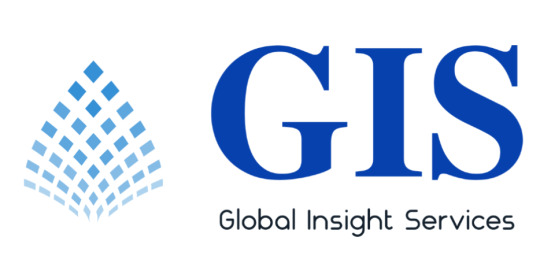
Immersion Cooling Fluids Market is surging, capturing the spotlight as industries race toward more energy-efficient and sustainable cooling solutions. Valued at $1.2 billion in 2024, it’s on an impressive trajectory to reach $4.5 billion by 2034, growing at a CAGR of 14.1%. This dynamic sector specializes in fluids that enable direct submersion of electronic components, revolutionizing thermal management across data centers, high-performance computing, and electric vehicles. The rising wave of high-density computing and the global push for greener technologies is setting the stage for remarkable innovation and expansion.
Click to Request a Sample of this Report for Additional Market Insights: https://www.globalinsightservices.com/request-sample/?id=GIS32352
Market Dynamics
Demand for immersion cooling fluids is booming, largely fueled by the explosion of cloud services, AI, blockchain applications, and the rise of edge computing. Synthetic fluids, prized for their superior thermal properties and durability, dominate the market with a 45% share. Mineral-based and biodegradable fluids are also gaining traction, especially as businesses aim to reduce their environmental footprint. However, challenges like high upfront costs, lack of fluid standardization, and regulatory hurdles loom large. Despite these obstacles, the market remains resilient, adapting through eco-friendly innovations and strategic collaborations among tech giants.
Key Players Analysis
Industry leaders like 3M, Shell, and ExxonMobil are at the forefront, each employing distinct strategies. 3M is pushing boundaries with new product developments, while Shell is betting big on renewable-based fluids. Other innovators such as Green Revolution Cooling, Asperitas, and Liquid Cool Solutions are not just participating — they’re redefining the game. Emerging companies like Cool Tech Solutions and Eco Chill Systems are injecting fresh energy into the market with next-generation formulations. Together, these players are reshaping the cooling landscape with a focus on efficiency, sustainability, and performance.
Regional Analysis
North America leads the charge, with the U.S. boasting a stronghold thanks to its tech infrastructure and sustainability goals. Europe follows closely, with Germany and the U.K. investing heavily in green data centers and sustainable IT operations. Asia Pacific is the rising star — China, India, and Japan are pouring resources into data center expansions, making the region a hotspot for future growth. Meanwhile, Latin America, the Middle East, and Africa are catching up fast, driven by digitalization, smart city initiatives, and the global energy transition. Each region brings unique opportunities and challenges, shaping a vibrant global market.
Recent News & Developments
The industry is buzzing with developments. Prices for immersion cooling fluids now range between $100 to $500 per gallon, depending on thermal efficiency and lifespan. Regulatory changes are tightening the rules, pushing companies toward greener, non-toxic alternatives. Big players like 3M and Shell are setting the pace with eco-conscious formulations. Meanwhile, geopolitical tensions and supply chain uncertainties are prompting localized production strategies. Excitingly, strategic partnerships are flourishing, bringing fresh innovation to the table as companies collaborate to develop smarter, more resilient cooling systems.
Browse Full Report : https://www.globalinsightservices.com/reports/immersion-cooling-fluids-market/
Scope of the Report
Our comprehensive report dives deep into the immersion cooling fluids market, covering segments like single-phase vs. two-phase cooling, mineral-based vs. synthetic-based fluids, and a wide range of applications from telecommunications to aerospace. We analyze regional dynamics, emerging trends, growth opportunities, competitive landscapes, and regulatory impacts. The study also explores new business models, disruptive technologies, and cross-segment synergies that are set to redefine the market’s future. If you’re navigating this high-growth sector, this report is your ultimate guide to staying ahead of the curve.
Discover Additional Market Insights from Global Insight Services:
Weather Monitoring System Market : https://www.globalinsightservices.com/reports/weather-monitoring-system-market/
Corrosion Under Insulation Monitoring Market : https://www.globalinsightservices.com/reports/corrosion-under-insulation-monitoring-market/
System Integrator Market : https://www.globalinsightservices.com/reports/system-integrator-market/
Semiconductor Waste Heat Recovery Systems Market : https://www.globalinsightservices.com/reports/semiconductor-waste-heat-recovery-systems-market/
Aerospace Semiconductor Market : https://www.globalinsightservices.com/reports/aerospace-semiconductor-market/
#immersioncooling #coolingfluids #datacenters #thermalmanagement #highperformancecomputing #energytransition #greentechnology #fluidtechnology #syntheticfluids #mineraloil #fluorocarbon #coolingsolutions #sustainabletech #edgecomputing #blockchaintech #cloudcomputing #energyefficiency #climatetech #datacenterinnovation #electronicscooling #techtrends #renewableenergy #greenit #smartcities #futureofcooling #globalmarkets #markettrends #cagrgrowth #emergingmarkets #sustainabilitygoals #electricvehicles #coolingrevolution #nextgentechnology #sustainablecooling #digitaltransformation #aiinfrastructure #innovationintech #datacenterexpansion #fluidsengineering #cleanenergy
About Us:
Global Insight Services (GIS) is a leading multi-industry market research firm headquartered in Delaware, US. We are committed to providing our clients with highest quality data, analysis, and tools to meet all their market research needs. With GIS, you can be assured of the quality of the deliverables, robust & transparent research methodology, and superior service.
Contact Us:
Global Insight Services LLC 16192, Coastal Highway, Lewes DE 19958 E-mail: [email protected] Phone: +1–833–761–1700 Website: https://www.globalinsightservices.com/
0 notes
Text
Exploring the Dynamics of ASX Smallcap Stocks in the Technology Sector
Highlights
Focus on technology-driven companies listed under ASX Smallcap stocks
Emphasis on innovation and digital transformation across multiple industries
Overview of market presence, business models, and sector-specific developments
The technology sector includes enterprises developing software, digital services, artificial intelligence, cloud platforms, and telecommunications innovations. Within this sphere, ASX Smallcap stocks are typically aligned with emerging trends that shape the digital economy. These entities often operate in specialized areas such as cybersecurity, fintech platforms, blockchain applications, and automation tools.
Businesses in this segment may focus on creating scalable platforms, deploying enterprise-level software, or building infrastructure for faster digital communication. Their core functions often address existing operational gaps in commercial processes or consumer services through unique digital solutions.
Product Development and Innovation Focus
Many entities in the ASX Smallcap stocks bracket channel efforts into continuous product improvement and feature expansion. Software-as-a-service models, subscription-based billing frameworks, and customer experience management tools are common offerings. These tools may serve enterprises looking for streamlined business functions or reduced manual interventions.
Innovation frequently stems from partnerships with universities or research bodies. These collaborations contribute to the adoption of advanced algorithms or integration of machine learning capabilities into core services. Businesses may also expand intellectual property portfolios through proprietary technologies or new patent filings.
Market Strategy and Revenue Channels
Revenue streams for ASX Smallcap stocks in the technology sector are usually diversified. Common sources include licensing fees, managed services, and white-label agreements. Businesses may pursue domestic growth strategies while initiating geographic expansion into nearby markets with compatible regulatory environments.
Adoption of business-to-business engagement models allows scalability without physical infrastructure constraints. Commercial activities often include onboarding clients from financial institutions, retail networks, or government bodies through tailored digital transformation frameworks.
Regulatory Environment and Compliance Trends
Firms under ASX Smallcap stocks must operate within sector-specific compliance mandates. These may include data privacy standards, financial technology rules, and consumer protection protocols. Compliance frameworks influence system architecture, software deployment, and operational protocols to ensure legal compatibility.
Independent audits, security certifications, and accreditation from regulatory bodies may be part of standard business processes. Some entities also adopt globally recognized data handling and encryption techniques, further aligning their services with global cybersecurity benchmarks.
Supply Chain and Technical Infrastructure
Many ASX Smallcap stocks utilize third-party providers for cloud hosting, infrastructure support, and network scalability. These partnerships enable higher uptime reliability, improved system redundancy, and efficient disaster recovery processes. Providers range from regional data centers to global platform-as-a-service firms.
Digital infrastructure considerations often include multi-cloud capabilities, container orchestration, and API integrations. Technology stacks are selected to optimize performance while reducing maintenance complexity across applications.
Human Capital and Talent Engagement
Recruitment within ASX Smallcap stocks frequently prioritizes software developers, data scientists, and cybersecurity specialists. Companies may also engage contractors or consultants to meet development timelines or implement specialized tools.
Training programs, remote work structures, and digital collaboration platforms support distributed team dynamics. Knowledge sharing and internal tool development contribute to consistent workflow efficiency and innovation output.
Call to Action For consistent updates on business developments across ASX Smallcap stocks, follow verified news channels and official company announcements. Review official disclosures to understand operational changes, product releases, and business expansions in the technology sector.
0 notes
Text
Enhancing Trust in Digital Transactions: How to Verify Customer Identity

In a digital-first world, the ability to verify customer identity has evolved from a security checkpoint into a core business strategy. As organizations scale and engage with users across global platforms, ensuring the legitimacy of user identities becomes critical—not just for compliance, but for customer trust and seamless experiences.
At the center of this process lies a powerful engine: identity proofing solutions. These technologies form the backbone of a secure identity verification framework, offering robust, real-time methods to authenticate and onboard users without friction.
Why Verifying Customer Identity Matters
The surge in online interactions—from banking to e-commerce to telehealth—has dramatically raised the stakes for identity fraud. As data breaches and account takeovers climb, businesses are expected to implement tighter security protocols to protect users.
Verifying customer identity helps in:
Preventing fraud and unauthorized access
Complying with legal and regulatory standards (e.g., KYC, AML)
Enhancing customer onboarding experiences
Protecting brand integrity and consumer trust
Without this layer of assurance, companies expose themselves to regulatory fines, loss of reputation, and degraded user confidence.
The Rise of Identity Proofing Solutions
To address these needs, businesses are turning to identity proofing solutions that combine artificial intelligence, biometrics, machine learning, and data validation. These tools not only streamline the verification process but also make it more accurate and scalable.
Key components of modern identity proofing solutions include:
Document verification: Scanning official IDs to check for authenticity
Biometric matching: Using facial recognition or fingerprint scans to confirm identity
Liveness detection: Ensuring the user is physically present and not a spoof
Database checks: Validating information against government or third-party databases
These systems are designed to reduce friction while maintaining high security standards, giving both users and businesses peace of mind.
Challenges in Customer Identity Verification
While digital identity verification offers many benefits, it’s not without challenges. Global companies often face a patchwork of regulatory requirements depending on their region, and not all users have access to the same type of identity documentation.
There’s also the matter of balancing user experience with stringent verification measures. Customers want speed and convenience, while businesses require thoroughness and accuracy. Overly complex processes may deter customers or increase abandonment rates.
This is where sophisticated identity proofing solutions shine—they can calibrate verification steps based on risk profiles, helping to streamline low-risk user onboarding while flagging potentially fraudulent behavior for deeper scrutiny.
Industry Applications
The need to verify customer identity spans across industries:
Financial services: Preventing money laundering, fraud, and ensuring compliance with KYC regulations.
E-commerce: Avoiding chargebacks and ensuring valid user transactions.
Healthcare: Protecting patient records and preventing insurance fraud.
Telecommunications: Securing SIM card registrations and preventing identity swaps.
In each of these sectors, implementing scalable identity proofing solutions has become essential to staying competitive and compliant.
Future of Identity Verification
As digital ecosystems grow more complex, identity verification will evolve to become even more adaptive and intelligent. The integration of decentralized identity systems and blockchain technology could soon redefine how individuals verify themselves across platforms.
In addition, behavioral biometrics—analyzing how users interact with devices—may become a supplementary layer to traditional methods, offering passive and continuous identity assurance.
Companies that invest now in advanced identity proofing solutions are not only future-proofing their operations but also laying a foundation of trust that modern consumers demand.
Conclusion
To verify customer identity in a seamless, secure, and scalable way is no longer optional—it's a strategic necessity. Identity proofing solutions offer the innovation and intelligence required to build trusted digital experiences across industries. By leveraging these technologies, businesses can reduce fraud, comply with regulations, and foster long-lasting relationships rooted in confidence.
1 note
·
View note
Text
Blockchain in ICT Industry Outlook to 2032: Market Size, Share, Growth & Analysis
The Blockchain in the ICT Market is changing how the data is stored, tracked, and shared among information and communication technology ecosystems; hence, it is emerging as a transformational force within ICT.
blockchain technology has emerged as a transformative force across the Information and Communication Technology (ICT) sector. Known primarily for its application in cryptocurrencies, blockchain is now being adopted in a wide range of ICT functions including secure data transmission, decentralized cloud storage, identity verification, digital payments, and smart contracts. As data becomes the backbone of digital economies, the need for transparency, security, and efficiency is propelling blockchain into the mainstream of ICT infrastructure.
Blockchain in ICT Market: Size, Share, Scope, Analysis, Forecast, Growth, and Industry Report 2032 indicates that the global market is poised for strong expansion, with rapid digital transformation and the increased need for secure communication networks acting as key drivers. Governments, telecom providers, cloud service platforms, and enterprise IT departments are exploring blockchain to decentralize control, reduce fraud, and enable trustless transactions. As the technology matures, it is expected to revolutionize the architecture of ICT systems globally.
Get Sample Copy of This Report: https://www.snsinsider.com/sample-request/5509
Market Keyplayers:
IBM – IBM Blockchain
Microsoft – Azure Blockchain Service
Oracle – Oracle Blockchain Platform
Accenture – Accenture Blockchain Solutions
Amazon Web Services (AWS) – Amazon Managed Blockchain
Intel – Intel Hyperledger Sawtooth
SAP – SAP Cloud Platform Blockchain
Ripple – RippleNet
Chainalysis – Chainalysis Reactor
Coinbase – Coinbase Blockchain Solutions
VeChain – VeChainThor Blockchain
Blockchain.com – Blockchain Wallet
Hyperledger – Hyperledger Fabric
Market Trends
Decentralized Identity Management: Enterprises are increasingly using blockchain to offer users control over their digital identities without relying on centralized authorities, reducing the risk of identity theft and enhancing privacy.
Blockchain-as-a-Service (BaaS): Tech giants like Microsoft, IBM, and Amazon Web Services are offering blockchain platforms that allow companies to develop and deploy blockchain applications without building the technology from scratch.
Telecom Transformation: Telecommunications companies are leveraging blockchain to automate processes like billing, number portability, and roaming services, significantly cutting operational costs and fraud.
Integration with Emerging Technologies: Blockchain is being integrated with AI, IoT, and 5G networks to improve data integrity, enable secure machine-to-machine communication, and enhance decision-making.
Enquiry of This Report: https://www.snsinsider.com/enquiry/5509
Market Segmentation:
By Component
Platforms:
Services
By Organization Size
Small and Medium Enterprises (SMEs)
Large Enterprises
By Deployment Type
On-premises
Cloud-based
By End-user
Telecommunication Providers
IT Service Providers
Cloud Service Providers
Networking Companies
Data Center Operators
Market Analysis
North America currently leads the market, thanks to high levels of digital adoption, regulatory support, and a strong ecosystem of blockchain startups. However, Asia-Pacific is rapidly catching up due to smart city initiatives, e-governance programs, and growing investments in blockchain R&D.
Several factors are contributing to this growth:
Increased Demand for Data Security: With rising cyber threats, blockchain’s immutable ledger offers a robust solution for safeguarding sensitive ICT data.
Regulatory Evolution: Many governments are moving towards clear blockchain regulations, enhancing adoption across sectors such as healthcare, finance, and telecom.
Cost Efficiency and Automation: Smart contracts and decentralized applications are reducing manual workloads, lowering costs, and minimizing errors in ICT operations.
Despite the promising outlook, challenges remain. Scalability, energy consumption, interoperability, and lack of standardization are critical hurdles that need to be addressed. Nonetheless, continuous innovation and collaborative efforts among governments, academia, and industry players are helping overcome these barriers.
Future Prospects
The future of blockchain in ICT is marked by integration, scalability, and mass adoption.
Scalable Blockchain Networks: Solutions like Layer 2 protocols, sharding, and consensus algorithm optimization are being developed to handle large-scale ICT operations.
Blockchain-Enabled Cloud Infrastructure: As cloud computing grows, blockchain is expected to offer decentralized storage and improved data access control mechanisms, particularly useful for multinational ICT firms.
Cross-Industry Collaborations: Tech and telecom industries are forming consortia and alliances to standardize blockchain practices, fostering ecosystem-wide interoperability.
Smart Infrastructure & Governance: In future smart cities, blockchain may serve as the backbone for managing utilities, data sharing, public records, and secure communications between government departments.
Green Blockchain Technologies: With environmental sustainability gaining importance, developers are focusing on energy-efficient consensus mechanisms like Proof of Stake and hybrid models.
Access Complete Report: https://www.snsinsider.com/reports/blockchain-in-ict-market-5509
Conclusion
Blockchain is no longer a niche innovation—it is a pivotal component of the ICT industry's digital evolution. From enhancing transparency in telecommunications to securing cloud storage and automating enterprise operations, the technology is proving its utility across the spectrum. The global momentum behind blockchain adoption is creating vast opportunities for both established companies and startups within the ICT ecosystem.
As infrastructure becomes smarter and more connected, blockchain’s role will grow even more significant. Its ability to establish trust, decentralize control, and enhance operational efficiency will make it an indispensable part of next-generation ICT frameworks. The coming decade promises to be a defining period for blockchain in ICT, with innovations, regulations, and collaborations driving a more secure and transparent digital world.
About Us:
SNS Insider is one of the leading market research and consulting agencies that dominates the market research industry globally. Our company's aim is to give clients the knowledge they require in order to function in changing circumstances. In order to give you current, accurate market data, consumer insights, and opinions so that you can make decisions with confidence, we employ a variety of techniques, including surveys, video talks, and focus groups around the world.
Contact Us:
Jagney Dave - Vice President of Client Engagement
Phone: +1-315 636 4242 (US) | +44- 20 3290 5010 (UK)
0 notes
Text
How DePIN is Revolutionizing Real-World Infrastructure Through Decentralization
In the ever-evolving landscape of Web3 and blockchain innovation, a new concept is gaining momentum: DePIN, short for Decentralized Physical Infrastructure Networks. This emerging model leverages blockchain technology to decentralize and democratize the development, operation, and ownership of physical infrastructure — from wireless networks to energy grids and beyond. By integrating crypto incentives with real-world utility, DePIN is redefining how infrastructure is built, managed, and monetized on a global scale.
What Is DePIN?
At its core, DePIN represents a shift from centralized ownership of infrastructure to a community-driven model. Traditional infrastructure — such as mobile networks, cloud storage, and transportation systems — typically requires massive capital investment and is dominated by large corporations or governments. DePIN flips that model by incentivizing individuals and small entities to contribute resources (like hardware, energy, or bandwidth) and get rewarded with tokens in return.
These contributions are verified and coordinated via blockchain, ensuring transparency, trust, and decentralized governance. As a result, DePIN networks can scale faster, lower costs, and increase resilience while distributing rewards across a broad, global user base.
Real-World Applications of DePIN
The power of DePIN lies in its real-world applicability. Several sectors are already being disrupted by DePIN-enabled models:
Telecommunications: Projects like Helium use DePIN to build decentralized wireless networks. Individuals set up hotspots and earn tokens by providing network coverage. This model is now expanding into 5G and IoT networks.
Cloud Storage and Compute: Projects like Filecoin and Akash Network reward users for offering unused storage and computing power, creating decentralized alternatives to services like AWS and Google Cloud.
Energy Grids: DePIN can also be applied to decentralized energy distribution, allowing individuals to contribute solar power or manage microgrids, receiving token incentives for their input.
Mobility and Logistics: Ride-sharing and delivery platforms based on DePIN principles are emerging, where drivers and riders interact without a central authority, enabling fairer revenue splits.
These examples show how DePIN extends blockchain’s value beyond digital assets into physical utility — a major leap forward for Web3.
Why DePIN Matters
The traditional infrastructure model has long suffered from inefficiencies, monopolies, and high barriers to entry. DePIN addresses these issues by:
Lowering Costs: Crowdsourced participation reduces the need for heavy upfront capital investment.
Increasing Access: DePIN networks can reach underserved or rural areas that traditional providers often ignore.
Empowering Users: Ownership and control are returned to the community, aligning incentives for sustainability and growth.
Driving Innovation: Open participation and token-based incentives fuel faster iteration and ecosystem development.
By removing centralized intermediaries and aligning incentives around real-world contributions, DePIN represents a paradigm shift in how we build infrastructure.
Challenges Facing DePIN
Despite its promise, DePIN is still in its early stages and faces several hurdles:
Regulatory Uncertainty: DePIN networks often operate in gray zones when it comes to telecom, energy, and other heavily regulated industries.
Hardware Reliability: Ensuring the quality and reliability of community-sourced hardware is a technical challenge.
Network Effects: Like any infrastructure network, DePIN needs scale to succeed, which means achieving critical mass in contributors and users.
However, as awareness grows and successful models emerge, these challenges are likely to be addressed through innovation and community collaboration.
The Future of DePIN
As blockchain technology matures and more people recognize the inefficiencies of centralized infrastructure, DePIN is poised to become a foundational component of the decentralized internet. From decentralized WiFi networks to community-powered energy grids, the possibilities are vast.
In the coming years, we can expect DePIN to play a central role in expanding Web3 into the physical world — creating infrastructure that is more inclusive, efficient, and aligned with the values of decentralization. As this movement gains traction, DePIN will not only revolutionize how infrastructure is built but also who gets to benefit from it.
DePIN isn’t just a technical upgrade; it’s a social and economic transformation. By empowering everyday individuals to become contributors, builders, and owners of physical infrastructure, it brings the ethos of Web3 into tangible, everyday reality.
1 note
·
View note
Text
Blockchain In Telecom Market - Forecast 2024-2030
Blockchain In Telecom Market Overview :
The blockchain in telecom market size is forecast to reach USD $25.2 billion by 2030, after growing at a CAGR of 54.4% during the forecast period 2024-2030. The term "blockchain in telecom market" describes how blockchain technology has been adopted and integrated into the telecommunications industry. Blockchain is a distributed, decentralized digital ledger system that keeps track of transactions on several computers while guaranteeing the security, integrity, and immutability of data.
The telecom industry is using blockchain technology more and more to strengthen security and enhance identity management. Blockchain offers a strong framework for managing identities and safeguarding consumer data through the use of a decentralized ledger, making identity theft and data breaches practically unheard of. By ensuring secure transactions and communications, this improves customer confidence and complies with regulations. The use of blockchain technology to offer revenue assurance and stop fraud is another noteworthy trend. Fraudulent activities such as roaming and subscription fraud cause telecom carriers to suffer significant losses. Because of its transparent and unchangeable ledger, blockchain ensures correct billing and minimizes revenue leakage by assisting in the real-time detection and prevention of fraudulent transactions. For telecom businesses, this improves operational efficiency and profitability.
Report Coverage
The report “Blockchain in Telecom Market – Forecast (2024-2030)”, by IndustryARC, covers an in-depth analysis of the following segments of the Blockchain in Telecom Market By Provider: Application Providers, Middleware Providers, Infrastructure Providers. By Organization Size: Small & Medium-Sized Enterprises, Large Enterprises. By Application: OSS/BSS Processes, Identity Management, Payments, Smart Contracts Connectivity Provisioning, Others. By Geography: North America (U.S, Canada, Mexico), Europe (Germany, UK, France, Italy, Spain, Russia, Netherlands and Others), APAC (China, Japan India, South Korea, Australia & New Zealand, Indonesia, Malaysia, Taiwan and Others), South America (Brazil, Argentina, Chile, Colombia and others), and RoW (Middle East and Africa).
Request Sample
Key Takeaways
North America dominated the Blockchain in Telecom Market in 2023, which is accounted for nearly 44%. The region's strong adoption rates of blockchain technology and sophisticated technological infrastructure are credited with this dominance.
Application Providers dominated the Blockchain in Telecom Market in 2023. These suppliers solve a range of industry concerns by providing crucial services that use blockchain technology into telecom operations.
Blockchain technology has the potential to significantly lower costs in the telecom industry by streamlining a number of operational procedures. A fundamental component of blockchain technology, smart contracts automate contract execution, doing away with the need for middlemen and cutting down on administrative burden
By Provider - Segment Analysis
Application Providers dominated the Blockchain in Telecom Market in 2023 at 42.4% share. These suppliers solve a range of industry concerns by providing crucial services that use blockchain technology into telecom operations. These vendors develop applications for effective contract management, fraud protection, secure transactions, and identity management. Since blockchain's decentralized and immutable nature guarantees safe and impenetrable identity verification processes, identity management in particular has proven to be a crucial topic. The telecom industry's growing need for transparent and safe technologies that enable improved security and consumer data management is what's causing this dominance. It is anticipated that application providers' roles would grow and become more established as the telecom sector continues to innovate and adopt new technology.
Inquiry Before Buying
By Application - Segment Analysis
Smart Contracts dominated the Blockchain in Telecom Market in 202 at 25.75 share. Self-executing contracts, or smart contracts, have the conditions of the contract explicitly encoded into the code. They are essential in the telecom sector because of their capacity to safely and automatically manage agreements without the need for middlemen. This technology lowers expenses, increases operational efficiency, and lowers the possibility of human error. Smart contracts have been used by telecom businesses for several purposes, such as supply chain management that is transparent and impenetrable, roaming agreement management, and billing process automation. Smart contracts are becoming more and more popular because of their capacity to simplify intricate telecom processes, giving businesses a competitive advantage and enhancing service quality overall.
By Geography - Segment Analysis
North America dominated the Blockchain in Telecom Market in 2023, which is accounted for nearly 44%. The region's strong adoption rates of blockchain technology and sophisticated technological infrastructure are credited with this dominance. Early adopters of blockchain technology include North American telecom corporations, who use it for secure transactions, fraud prevention, and effective data management, among other uses. The telecom industry's adoption of blockchain solutions has been expedited by the robust presence of large technology corporations and startups in the United States. For instance, in April 2024, Aptos Labs is working on an institutional blockchain platform in partnership with SK Telecom and Microsoft. Furthermore, North America's dominant position has been reinforced by encouraging regulatory frameworks and significant expenditures in blockchain research and development. North America is therefore still a major participant in the blockchain telecom market, pushing innovation and establishing benchmarks for the sector.
Schedule a Call
Drivers – Blockchain in Telecom Market
Enhanced Security and Fraud Prevention
Strong security characteristics offered by blockchain technology are essential for the telecom sector. Preventing fraud is one of the main advantages, particularly when it comes to identity verification and roaming. Fraudulent actions cause telecom businesses to lose a lot of money, but the decentralized and unchangeable record of blockchain helps to reduce these risks. For instance, in February 2024, Telefónica and Chainlink Partnered to offer Security Against "SIM Swap" Attacks. Through this partnership, blockchain transactions will benefit from an additional degree of protection. Blockchain lessens the possibility of fraudulent activity and illegal access by guaranteeing that every transaction is visible and verifiable. Blockchain is a vital tool for the future development and credibility of the telecom industry because of its improved security, which not only safeguards customer data but also fortifies the general integrity of telecom networks.
Operational Efficiency and Cost Reduction
Blockchain technology has the potential to significantly lower costs in the telecom industry by streamlining a number of operational procedures. A fundamental component of blockchain technology, smart contracts automate contract execution, doing away with the need for middlemen and cutting down on administrative burden. This automation can be used to improve efficiency and lower errors in a variety of telecom tasks, including supply chain management, service delivery, and billing. Telecom firms can achieve higher operational efficiency, which translates to cost savings and enhanced customer service quality, by reducing manual processes and guaranteeing faster, more reliable transactions.
Buy Now
Challenges – Blockchain in Telecom Market
Regulatory and Compliance Challenges
Blockchain technology works in a regulatory landscape that is complicated, especially in the telecom sector, which is already governed by strict laws. The adoption of blockchain technology increases the difficulty of adhering to legal requirements such as data protection legislation and anti-money laundering regulations. The regulatory environment pertaining to blockchain technology and cryptocurrencies is fragmented as a result of differing national laws. To guarantee that their blockchain implementations adhere to all applicable laws, telecom businesses need to successfully negotiate these regulatory obstacles. Furthermore, regulatory compliance may be hampered by the anonymity and immutability of blockchain transactions, making it challenging to audit and monitor specific activity. To overcome these obstacles and guarantee that blockchain solutions are transparent and compliant with the law, strong regulatory cooperation and compliance framework development are necessary.
Market Landscape
Technology launches, acquisitions, and R&D activities are key strategies adopted by players in the Blockchain in Telecom Market in 2023, The major players in the Blockchain in Telecom Market are Amazon Web Services, Microsoft, SAP, Oracle, IBM, Huawei Enterprise, Subex, Protokol BV, Recordskeeper, Cegeka and Others.
Developments:
In April 2024, the company behind the now-defunct Diem blockchain, Aptos Labs, a blockchain business created by former Meta Platforms Inc. staff members, revealed that it has partnered with significant technology and financial companies to develop Aptos Ascend, a digital asset management platform for financial institutions.
In February 2024, Telefónica and Chainlink Partnered to offer Security Against "SIM Swap" Attacks. Through this partnership, blockchain transactions will benefit from an additional degree of protection
#Blockchain In Telecom Market#Blockchain In Telecom Market size#Blockchain In Telecom industry#Blockchain In Telecom Market share#Blockchain In Telecom top 10 companies#Blockchain In Telecom Market report#Blockchain In Telecom industry outlook
0 notes
Text
DDI Market on Track to Reach $5.8 Billion by 2034 – 8.8% CAGR
DDI (DNS, DHCP, and IP Address Management) market encompasses solutions that streamline the management of network services essential for modern IT infrastructures. It includes software and hardware tools that automate and integrate DNS and DHCP services with IP address management, enhancing network efficiency, security, and compliance. This market is driven by the increasing complexity of network environments, the proliferation of connected devices, and the need for robust, scalable solutions to support digital transformation initiatives across industries.
To Request Sample Report : https://www.globalinsightservices.com/request-sample/?id=GIS20287 &utm_source=SnehaPatil&utm_medium=Article
The DDI (DNS, DHCP, and IP Address Management) market is witnessing robust growth, propelled by the increasing complexity of network infrastructures and the proliferation of connected devices. DNS services lead the market, driven by the critical need for efficient domain name resolution in expanding digital ecosystems. DHCP services follow closely, supported by the demand for automated IP address allocation in dynamic network environments. IP Address Management solutions are gaining momentum, reflecting the necessity for centralized control and visibility in IP address distribution.
Geographically, North America stands at the forefront, benefiting from advanced technological adoption and a strong emphasis on cybersecurity. Europe ranks as the second-highest performing region, with regulatory compliance and data protection initiatives fueling market expansion. Within these regions, the United States and Germany emerge as key contributors, owing to their robust IT infrastructure and innovation-driven economies. The Asia-Pacific region is poised for rapid growth, driven by digital transformation initiatives and burgeoning telecom sectors.
Market Segmentation
Type: Software, Hardware, Services
Product: Integrated Platforms, Standalone Solutions, Cloud-based Systems, On-premise Systems
Services: Consulting, Implementation, Support and Maintenance, Managed Services
Technology: AI and Machine Learning, Blockchain, IoT Integration, Big Data Analytics, Automation, Cloud Computing
Component: Network Components, Security Components, Database Components, Interface Components
Application: Network Management, Data Management, Security Management, Compliance Management
Deployment: Cloud, On-premises, Hybrid
End User: Telecommunications, IT and ITeS, Banking, Financial Services, and Insurance, Healthcare, Retail, Manufacturing, Government, Education
In 2024, the DDI (DNS, DHCP, and IPAM) Market was characterized by a total volume of approximately 150 million units, projected to grow to 250 million units till 2028. The DNS segment commands the largest market share at 45%, followed by DHCP at 30%, and IPAM at 25%. The DNS segment’s dominance is driven by the increasing demand for scalable network solutions and enhanced security features. Prominent players in the market include Infoblox, BlueCat Networks, and EfficientIP, each holding substantial market positions. Infoblox leads with a focus on automation and security enhancements, while BlueCat Networks emphasizes cloud integration.
#ddi #dns #dhcp #ipmanagement #networksecurity #cybersecurity #cloudcomputing #iot #bigdata #automation #machinelearning #blockchain #networkinfrastructure #telecommunications #digitaltransformation #dataprotection #networkefficiency #aiintegration #networksolutions #hybridcloud #datamanagement #managedservices #networkautomation #cloudsecurity #networkmonitoring #datacenter #5gtechnology #networking #ipaddressmanagement #cyberthreats #smartnetworks #digitalinnovation #regulatorycompliance #networkvisibility #cloudintegration #networkperformance #scalablenetworks #enterpriseit #ddiservices #infosec #softwaredefinednetworking
0 notes
Text
RegTech Market Size, Share, Analysis, Forecast, and Technological Growth to 2032
RegTech Market size was valued at USD 13.6 billion in 2023 and is expected to grow to USD 88.13 billion by 2032 and grow at a CAGR of 23.1 % over the forecast period of 2024-2032.
The RegTech (Regulatory Technology) market is witnessing rapid evolution as financial institutions and enterprises embrace digital compliance solutions to navigate increasingly complex regulatory landscapes. Automation, AI-driven analytics, and cloud-based platforms are driving significant improvements in cost-efficiency and risk mitigation. The shift from traditional compliance systems to agile, real-time regulatory monitoring tools is positioning RegTech as a cornerstone of future-ready financial and operational governance.
RegTech Market Poised for Transformative Growth Amid Rising Regulatory Pressures Organizations across industries, especially banking, insurance, and fintech, are leveraging RegTech innovations to proactively manage compliance obligations, enhance reporting accuracy, and strengthen cybersecurity defenses. As data privacy laws tighten globally and regulatory scrutiny intensifies, the demand for scalable and adaptive RegTech solutions is surging, making it a strategic imperative rather than an operational option.
Get Sample Copy of This Report: https://www.snsinsider.com/sample-request/3725
Market Keyplayers:
CUBE (Automated Regulatory Intelligence, RegPlatform)
Thomson Reuters (Regulatory Intelligence, CLEAR Compliance)
Hummingbird RegTech (Compliance Workflow Tools, Investigation Platform)
Ascent Technologies, Inc. (Compliance Confidence Scorecard, Regulatory Knowledge)
Fenergo (Client Lifecycle Management, Regulatory Rules Engine)
ComplyAdvantage (Transaction Monitoring, Risk Monitoring)
NICE Actimize (Surveillance, AML Solutions)
ClauseMatch (Policy Management, Compliance Workflow)
Trunomi (Data Rights Management, Consent Management)
Chainalysis (Cryptocurrency Transaction Monitoring, KYT – Know Your Transaction)
Market Analysis The RegTech market is expanding across developed and emerging economies, fueled by regulatory reforms, technological advancements, and heightened enforcement actions. Financial services remain the leading adopters due to the industry's high exposure to compliance-related risks, but sectors like healthcare, energy, and telecommunications are increasingly entering the landscape. Strategic investments, partnerships, and product innovations continue to shape the competitive dynamics and push the boundaries of what RegTech can offer.
Market Trends
Surge in AI and machine learning adoption to enhance real-time monitoring and predictive compliance
Growth in demand for cloud-based and SaaS platforms offering cost-effective scalability
Increasing integration of blockchain for audit trails and secure data validation
Expansion of Know Your Customer (KYC) and Anti-Money Laundering (AML) automation solutions
Rising interest in RegTech-as-a-Service (RaaS) for small and medium-sized enterprises
Collaboration between regulators and technology providers to foster innovation sandboxes
Emphasis on cross-border compliance due to globalization of business operations
Market Scope The RegTech market encompasses a diverse range of applications including regulatory reporting, identity management, transaction monitoring, risk and compliance management, and fraud detection. It serves financial institutions, regulatory bodies, and enterprises that face stringent compliance mandates. As compliance becomes more digitized and integrated with business strategy, RegTech solutions are finding new use cases across HR, supply chains, and ESG (Environmental, Social, and Governance) reporting, widening the market’s scope beyond its financial roots.
Market Forecast With innovation and regulation running parallel, the RegTech market is set for a strong growth trajectory. The adoption curve is expected to steepen with advancements in natural language processing, real-time data processing, and open banking APIs. As governments introduce digital regulatory frameworks and stakeholders seek proactive risk controls, RegTech is evolving from a niche support system to a critical enabler of enterprise resilience and agility. Geographic expansion, especially in Asia-Pacific and Latin America, will contribute to the market’s global momentum.
Access Complete Report: https://www.snsinsider.com/reports/regtech-market-3725
Conclusion As industries navigate the dual forces of digital transformation and regulatory complexity, RegTech emerges not just as a solution but as a strategic revolution. The fusion of technology and regulation is redefining the compliance landscape, unlocking new efficiencies and enabling smarter governance.
About Us:
SNS Insider is one of the leading market research and consulting agencies that dominates the market research industry globally. Our company's aim is to give clients the knowledge they require in order to function in changing circumstances. In order to give you current, accurate market data, consumer insights, and opinions so that you can make decisions with confidence, we employ a variety of techniques, including surveys, video talks, and focus groups around the world.
Contact Us:
Jagney Dave - Vice President of Client Engagement
Phone: +1-315 636 4242 (US) | +44- 20 3290 5010 (UK)
0 notes
Text
Blockchain Use in Industry: From Agriculture to Education
Blockchain technology, once synonymous solely with cryptocurrencies like Bitcoin, has evolved into a transformative force across numerous industries. Its core features—decentralization, immutability, and transparency—are revolutionizing business operations worldwide. From supply chain improvements to enhanced data security, blockchain’s potential spans far beyond finance. This article explores the widespread application of blockchain, highlighting its impact on agriculture, telecommunication, insurance, logistics, retail, e-commerce, and education.
Blockchain In Agriculture
The agricultural sector, long challenged by inefficiencies and lack of transparency, is now benefiting immensely from blockchain in Agriculture and blockchain farming solutions. Blockchain enables complete traceability from farm to fork, allowing stakeholders to track every stage—seeding, fertilizing, harvesting, and shipping—on a secure, immutable ledger. This ensures food authenticity and safety, crucial for organic and non-GMO products.
Additionally, blockchain farming streamlines payments through smart contracts, reducing reliance on intermediaries and ensuring timely compensation for farmers. Agricultural insurance is also transformed by blockchain agriculture, where smart contracts triggered by satellite or IoT data automate flood and drought claims, eliminating delays and disputes.
Blockchain In Telecommunication
The telecommunication industry is embracing blockchain in telecom to combat fraud, simplify billing, and enhance roaming services. Blockchain in Telecommunication secures user identity and call data, preventing frauds such as SIM swaps and phishing roaming charges via an unalterable monitoring system.
Moreover, blockchain for telecom enables real-time reconciliation of inter-operator fees using smart contracts, reducing administrative overhead and dispute resolution time. A new frontier is the advent of decentralized 5G networks, where blockchain facilitates secure micro-transactions between network nodes and users, promoting transparency and efficiency.
Blockchain In Insurance
The blockchain for the insurance industry is revolutionizing fraud prevention, claims automation, and transparency. By maintaining policy details and claims on an immutable shared ledger, trust among insurers, reinsurers, and regulators is significantly improved. This ledger helps detect duplicate or false claims effectively.
Smart contracts are automating claims processes, such as instant travel insurance reimbursements for flight delays based on real-time data. Overall, Blockchain in Insurance boosts operational efficiency and regulatory compliance, paving the way for a more transparent insurance ecosystem.
Blockchain In Logistics
Logistics, with its intricate network of warehouses, shippers, and suppliers, is being transformed by blockchain for logistics. Every product is assigned a digital fingerprint, allowing real-time tracking and immutable transaction logs from production to delivery.
Blockchain in logistics also streamlines documentation like bills of lading and customs declarations, stored securely on a shared ledger to minimize delays and errors. Smart contracts further automate payments upon delivery, enhancing trust and speed among supply chain partners.
Blockchain In Retail
The retail sector is undergoing significant change thanks to blockchain for retail and blockchain fashion. With counterfeit goods prevalent, blockchain authenticates products by embedding digital certificates on items, which consumers can verify through QR codes, especially important for luxury fashion brands.
Beyond authentication, blockchain in retail improves inventory management by enabling real-time stock tracking across warehouses and stores, reducing overstock and shortages. Loyalty programs also benefit as tokenized reward points become transferable and fraud-resistant across platforms, encouraging greater customer engagement.
Blockchain In E-commerce
In the e-commerce space, blockchain addresses fraud, trust, and operational inefficiencies. Transparent, verifiable ratings and reviews are stored immutably on the blockchain, ensuring authenticity. Payments via cryptocurrencies reduce reliance on third-party processors and lower transaction fees.
Additionally, blockchain supports product verification through digital certificates and automates order fulfillment with smart contracts. Decentralized identity management gives consumers greater control over personal data, enhancing security and reducing breaches.
Blockchain In Education
The educational sector is harnessing blockchain in education and blockchain in learning to enhance credentialing, transparency, and student empowerment. Academic records, such as diplomas and certificates stored on blockchain, are easily verifiable and tamper-proof, simplifying verification for employers and institutions.
Students gain from stackable, modular micro-credentials that enable personalized learning pathways. Decentralized education platforms connect teachers directly with learners, bypassing intermediaries. Smart contracts also streamline fee payments and scholarship disbursements with transparency and efficiency.
Cross-Industry Applications and Benefits
Across all these sectors—whether blockchain in telecom, blockchain agriculture, or blockchain in education—the benefits are consistent:
Enhanced transparency and traceability
Improved data integrity and security
Lower operational costs through reduced intermediaries
Automation of processes via smart contracts
Real-time data access and updates
These advantages position blockchain as a key driver of digital transformation globally.
Challenges in Blockchain Adoption
Despite its promise, blockchain adoption faces hurdles such as:
High energy consumption and scalability issues, particularly with Proof-of-Work
Regulatory uncertainty
Lack of universal standards
Complexity integrating blockchain with legacy systems
Overcoming these will require strategic investments, regulatory clarity, and cross-industry collaboration.
Osiz Technologies: Leading Blockchain Solutions Provider
For organizations aiming to harness blockchain, Osiz Technologies stands out as a premier blockchain development company. With over ten years of expertise and a global footprint, Osiz delivers tailored blockchain solutions across industries—from blockchain agriculture platforms and blockchain for telecom, to blockchain in learning systems.
Their comprehensive services include:
Custom blockchain development
Smart contract creation and auditing
Supply chain blockchain integration
DeFi and NFT platform engineering
Decentralized identity and credential management
Tokenization for retail and e-commerce
Combining deep technical expertise with industry knowledge, Osiz Technologies empowers businesses to thrive in a decentralized future.
Conclusion
From blockchain farming and blockchain in telecom to blockchain in learning, decentralized technology is reshaping industries at an accelerating pace. By embracing blockchain now, organizations can unlock unprecedented transparency, efficiency, and trust. With expert partners like Osiz Technologies, the path toward a decentralized digital future is not only promising but achievable.
0 notes